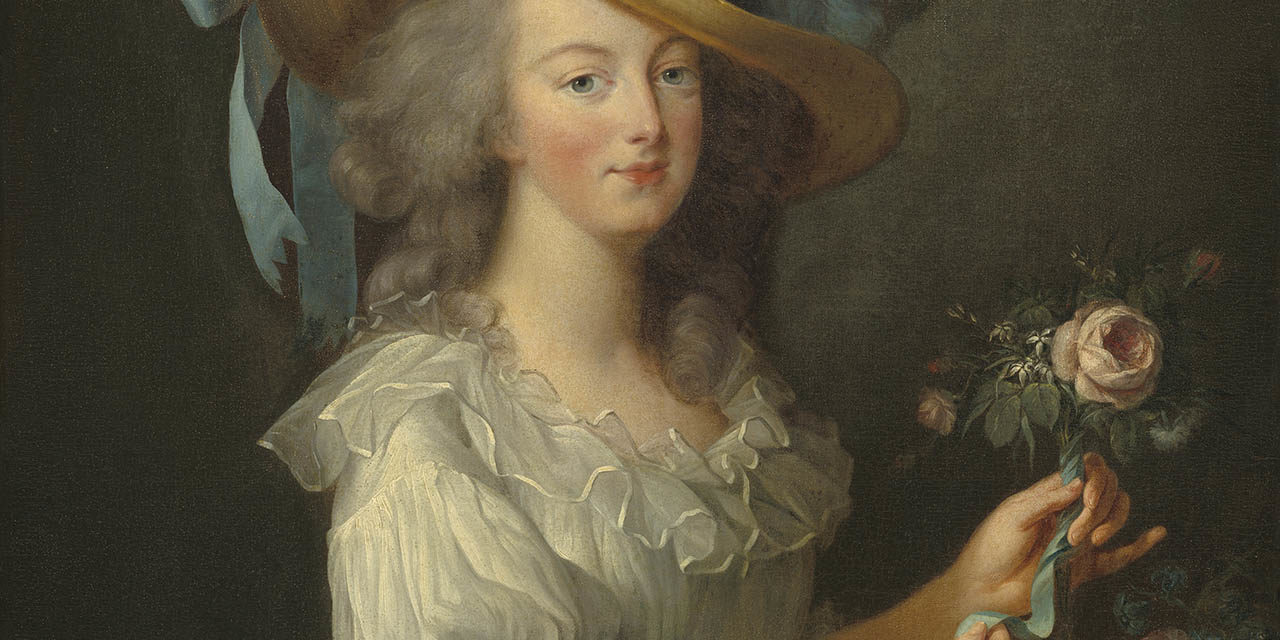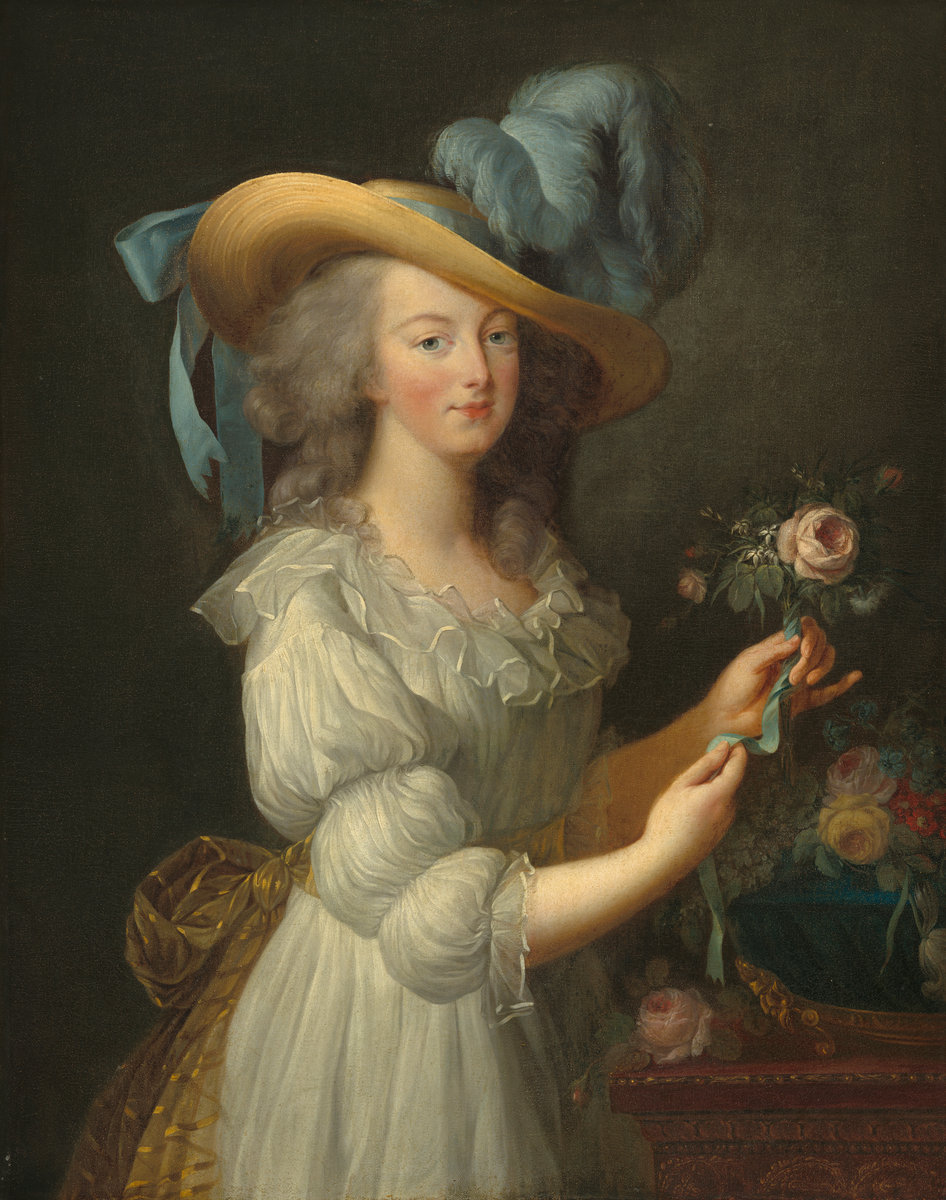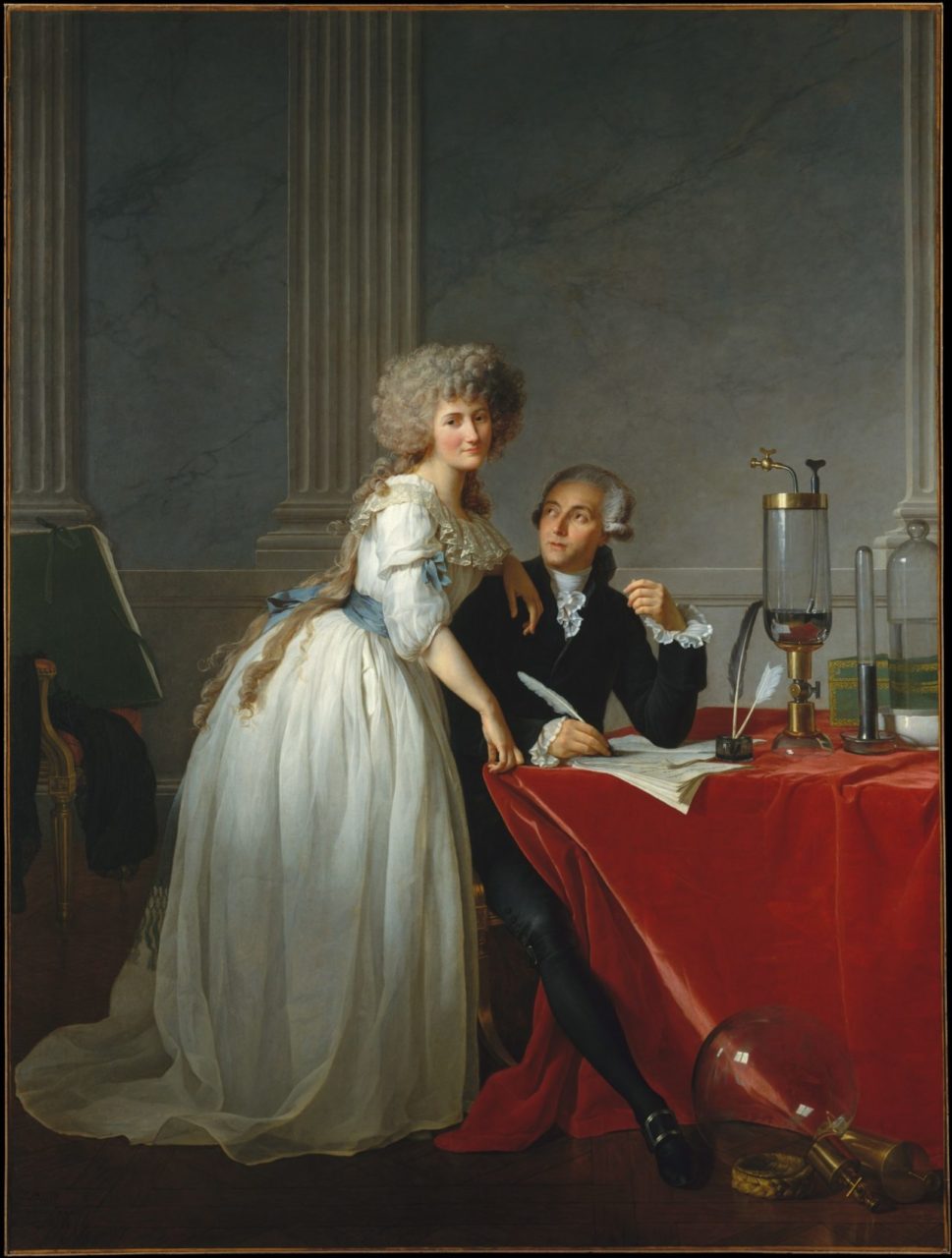A dress fashionable in the 1780s, constructed out of muslin with a straight cut gathered with a sash or drawstring.
The Details
Fashion: The Definitive History and Style (2012) authors Kathryn Hennessy and Anna Fischel define the chemise dress as:
“Fashionable in the 1780s, this garment was the forerunner of later neoclassical dress. The style, a tube of cotton muslin with a drawstring at the neck and sash at the waist, grew popular throughout Europe.” (156)
Figure 1 is a painting that shows French Queen Marie Antoinette wearing the robe en chemise, which she helped popularize.
In Survey of Historic Costume (2015), Phyllis G. Tortora explains that the robe en chemise also went by another name that reflected its royal association:
“Chemise à la reine was a white muslin gown that resembled the chemise undergarment of the period, but, unlike the chemise, had a waistline and a soft, fully gathered skirt. This garment made of very costly muslin imported from India, was a forerunner of styles of the beginning of the 19th century.” (289)
Reine is French for queen–a clear reference to Marie Antoinette. As seen in figure 2, the skirt of the robe en chemise is fully gathered and made out of a fine muslin.
In The Berg Companion to Fashion (2010), Susan Ward explains the dress’s name and origin at greater length:
“The term chemise was first used to describe an outer garment in the 1780s, when Queen Marie Antoinette of France popularized a kind of informal, loose-fitting gown of sheer white cotton, resembling a chemise in both cut and material, which became known as the chemise à la reine. After chemise dresses, cut straight and gathered to a high waist with a sash or drawstring, became the dominant fashion, around 1800, there was no longer a need to describe their silhouette, and the term “chemise” reverted almost exclusively to its former meaning [that is as an undergarment].”
In figure 3, you see an example of the robe en chemise showing the drawstring at the neck and a sash at the waist. Both figures 3 and 4 feature gowns that were worn outside of France in England and Denmark, showing the wide extent of the trend’s adoption.
Fig. 1 - Élisabeth-Louise Vigée Le Brun (French, 1755 - 1842). Marie-Antoinette, After 1783. Oil on canvas; 92.7 x 73.1 cm. Washington D.C: National Gallery of Art, 1960.6.41. Source: National Gallery of Art
Fig. 2 - Jacques Louis David (French, 1748–1825). Antoine Laurent Lavoisier (1743–1794) and His Wife (Marie Anne Pierrette Paulze, 1758–1836), 1788. Oil on canvas; 259.7 x 194.6 cm. New York: The Metropolitan Museum of Art, 1977.10. Purchase, Mr. and Mrs. Charles Wrightsman Gift, in honor of Everett Fahy, 1977. Source: The Metropolitan Museum of Art
Fig. 3 - George Romney (British, 1734–1802). Lady Lemon (1747–1823), mid- to late 1780s. Oil on canvas; 127 x 101.6 cm. New York: The Metropolitan Museum of Art, 1975.1.235. Robert Lehman Collection, 1975. Source: The Metropolitan Museum of Art
Fig. 4 - Jen Jueal (Danish, 1745-1802). Portrait of Princess Louise Auguste of Denmark, 1787. Oil on canvas. Washington D.C: The Museum of Natural History. Source: Wikimedia
References:
- Fashion: The Definitive History of Costume and Style. Edited by Susan Brown. New York: DK Publishing, 2012. http://www.worldcat.org/oclc/915140562.
- Hill, Daniel Delis. History of World Costume and Fashion. Upper Saddle River, NJ: Pearson Prentice Hall, 2011. http://www.worldcat.org/oclc/939043732.
- Tortora, Phyllis G., and Sara B. Marcketti. Survey of Historic Costume. Sixth edition. New York: Fairchild Books, 2015. http://www.worldcat.org/oclc/910929404.
- Ward, Susan. “Chemise Dress.” In The Berg Companion to Fashion, edited by Valerie Steele. Oxford: Bloomsbury Academic, 2010. Accessed September 15, 2018. https://www.bloomsburyfashioncentral.com/products/berg-fashion-library/encyclopedia/the-berg-companion-to-fashion/chemise-dress.














